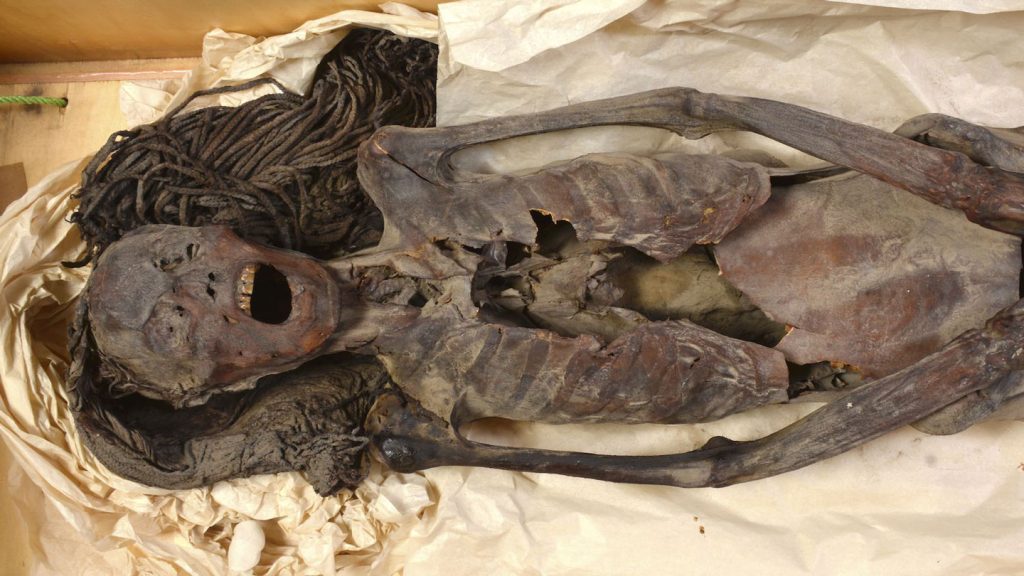The study of an ancient Egyptian mummy known as the “Screaming Woman” reveals that her open-mouthed look of pain or fear might have been caused by cadaveric spasm, a rare muscle reaction associated with violent deaths. Researchers reported their findings in Frontiers in Medicine after analyzing the roughly 3,500-year-old mummy. While the exact cause of the woman’s death remains undetermined, evidence suggests that the embalmers took great care in preparing her mummified body, as seen in the costly and meticulous procedures used. This challenges the assumption that the open-mouthed look was simply a result of negligence or oversight.
The unnamed woman’s mummy was discovered in a burial chamber connected to the architect Senmut, who worked during Queen Hatshepsut’s reign from 1479 B.C. to 1458 B.C. CT scans conducted in the recent study showed that her internal organs had not been removed, a departure from typical Egyptian embalming practices. Microscopic and chemical analyses conducted by the researchers revealed that imported juniper resin and frankincense were used to preserve the body and maintain its well-preserved state. Additionally, the woman’s natural hair was dyed with juniper resin and henna, and she wore a braided wig made from date palm fibers that had been stiffened and dyed black with a mineral treatment.
The meticulous care and attention to detail in the woman’s mummification process suggest a high level of respect and reverence for the deceased in ancient Egyptian culture. The use of expensive and imported materials, as well as the elaborate treatments applied to the body, underscored the significance of the mummification process in preserving the deceased’s physical form for the afterlife. Furthermore, the specific use of resin and henna to dye the woman’s hair, along with the symbolic meaning of the color black in Egyptian culture, highlight the cultural and religious beliefs surrounding death and the afterlife in ancient Egypt.
The new evidence presented in the study challenges previous assumptions about the causes of the woman’s distinctive appearance as the “Screaming Woman.” While cadaveric spasm is a possible explanation for her open-mouthed expression, it cannot be definitively confirmed without knowing the exact circumstances of her death. However, the detailed examination of the mummification process and the care taken in preparing the woman’s body shed new light on the practices of ancient Egyptian embalmers and the cultural significance of mummification in ancient Egypt. Further research and analysis of the mummy’s remains may provide additional insights into the life, death, and beliefs of the woman and the society in which she lived.
In conclusion, the study of the “Screaming Woman” mummy offers a fascinating glimpse into the ancient Egyptian funerary practices, beliefs, and cultural traditions surrounding death and the afterlife. The meticulous care and attention to detail in her mummification process reflect the importance of proper preservation and preparation of the deceased for the afterlife. The use of expensive materials and elaborate treatments emphasize the reverence and respect ancient Egyptians had for the deceased. While the exact cause of her open-mouthed expression remains uncertain, the study provides valuable insights into ancient Egyptian mummification practices and the significance of preserving the physical form for the journey to the afterlife.


